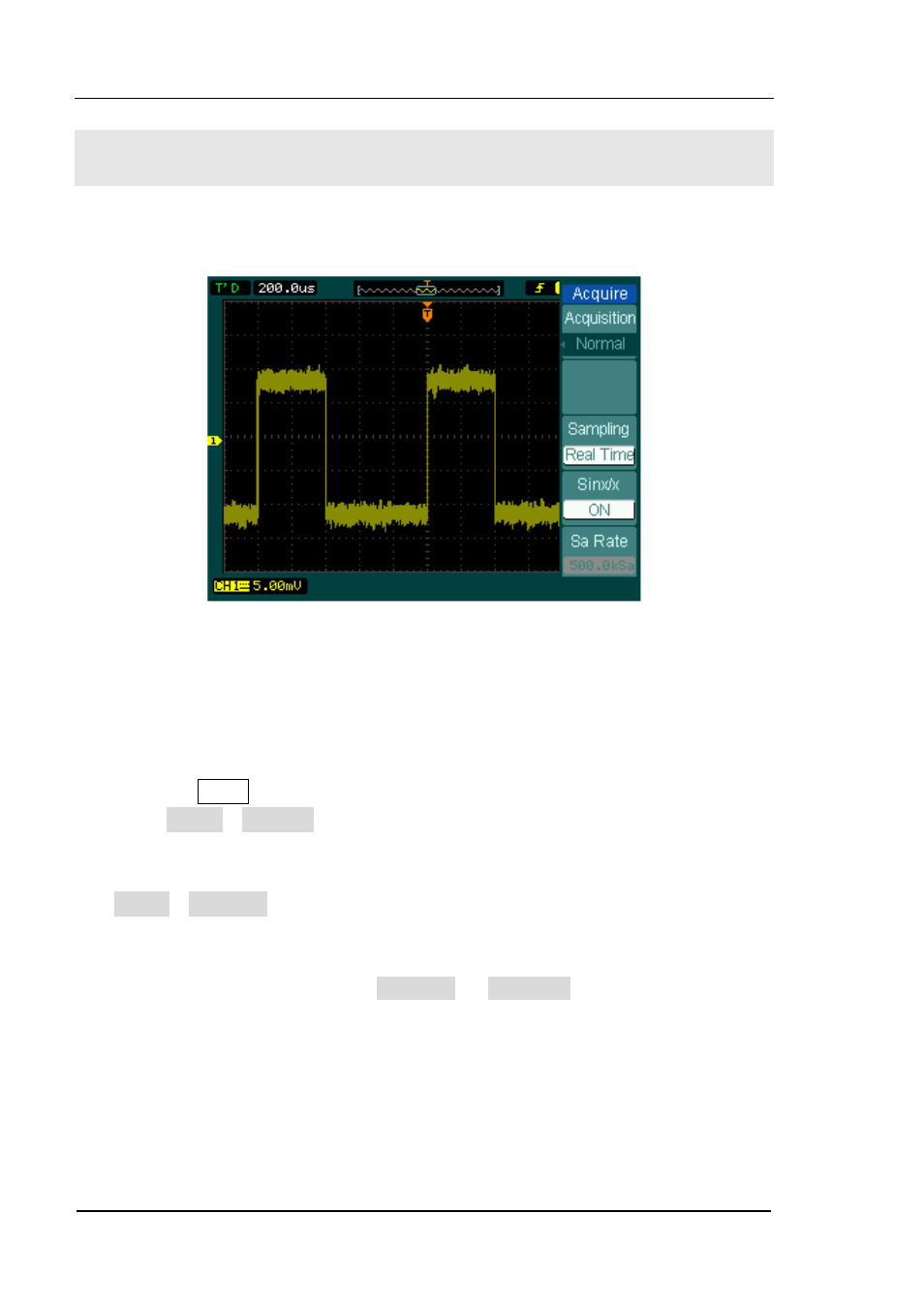Example 4: to reduce the random noise on a signal – RIGOL DS1000B User Manual
Page 142

RIGOL
User’s Guide for DS1000B Series
3-4
Example 4: To Reduce the Random Noise on a Signal
If the signal is noisy (Figure 3-2), set up the oscilloscope to reduce the noise on the
waveform and avoid its interference to the signal.
Figure 3-2 Signal with noises
1. Set the probe
[1]
and the channel attenuations to 10X.
2. Connect a signal to the oscilloscope and obtain a stable display.
3. Improve the trigger by setting the Coupling.
(1) Press the MENU in the Trigger control area.
(2) Press Set Up→Coupling and select “LF Reject”. Low frequency reject, namely
adding a high pass filter, filters out the low-frequency signal components (lower
than 10kHz) while allows high-frequency signal components to pass. Or press
Set Up→HF Reject and select “ON”. High frequency reject, namely adding a low
pass filter, filters out the high-frequency signal components (greater than
100KHz, such as FM broadcast signal) while allows low frequency signal
components to pass. Through LF Reject or HF Reject, low frequency or high
frequency noise is rejected to obtain stable trigger.
Note:
[1] For DS1204B, the standard probe is RP3300A which attenuation ratio is fixed at 10X and does
not need to be adjusted.
